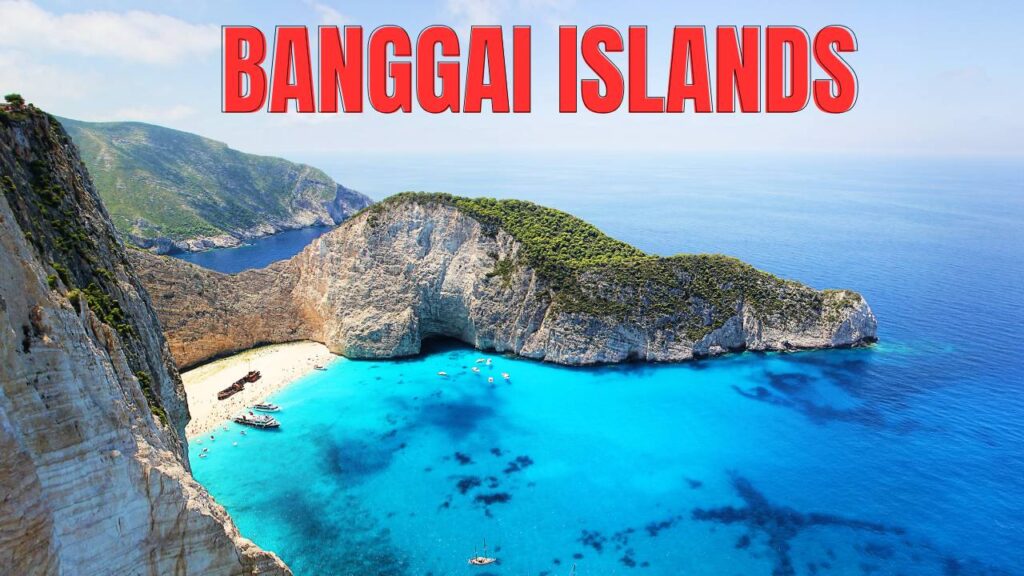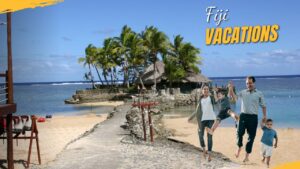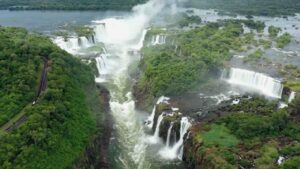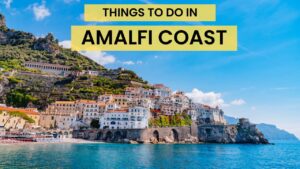Banggai Islands are Indonesia’s hidden paradise, offering untouched natural beauty, rich marine life, and authentic local culture.
Located in the heart of Central Sulawesi, far from the hustle of popular tourist hubs like Bali or Jakarta, lie the stunning Banggai Islands — an archipelago that remains one of Indonesia’s most underrated travel destinations. With their turquoise waters, coral reefs teeming with marine life, and deeply rooted local traditions, the Banggai Islands are truly a hidden paradise waiting to be . Whether you’re a diver, cultural explorer, or just someone seeking tranquility away from tourist crowds, this destination offers something uniquely special.
Where Are the Banggai Islands Located? A Quick Guide for First-Time Travelers
The Banggai Islands are located in the eastern part of Central Sulawesi, Indonesia. This remote group of over 120 islands lies between the Gulf of Tolo and the Banda Sea. The main islands in the archipelago include Banggai Island, Peleng, Labobo, and Bokan Kepulauan.
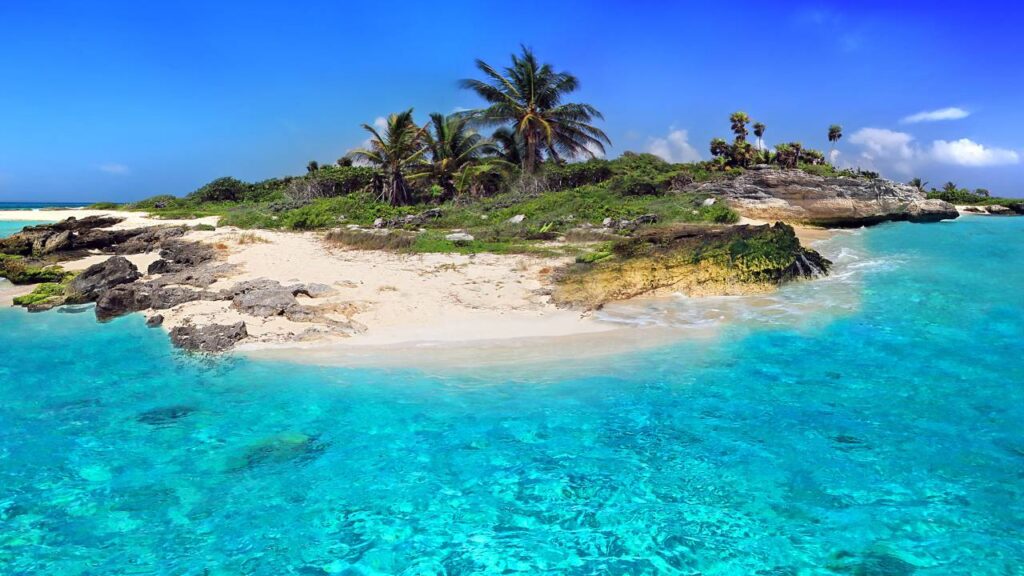
To get there, travelers typically fly into Luwuk Airport (LUW) on Sulawesi Island. From Luwuk, it’s about a 4 to 6-hour ferry ride or a shorter speedboat trip to reach the main islands. Despite the journey, the reward is incomparable—imagine untouched beaches, welcoming locals, and natural beauty that feels worlds away from the over-commercialized destinations.
Morocco Itinerary: 10 Days of Incredible Landscapes, Culture & Adventure
Due to its remote location, the Banggai Islands have remained largely off the international tourism radar, making it ideal for those seeking a more authentic and pristine Indonesian island experience.
How to Reach the Banggai Islands: Flights, Boats, and Travel Tips
Traveling to the Banggai Islands offers an exciting journey into a more remote and serene part of Indonesia. While getting there requires some effort and planning, the stunning landscapes and unspoiled beauty of the islands make the adventure worthwhile.
Here’s a detailed guide to help you navigate your way to this hidden gem in Central Sulawesi.
Step 1: Flying to Luwuk
The Syukuran Aminuddin Amir Airport (LUW) in Luwuk, Central Sulawesi, is the nearest airport to the Banggai Islands. Luwuk serves as the gateway for travelers heading to the archipelago, with daily flights available from major cities such as Makassar, Manado, and Jakarta. Airlines like Wings Air, Lion Air, and Batik Air operate regular routes, making it relatively easy to find a convenient flight to Luwuk.
Flights from Makassar (South Sulawesi), Manado (North Sulawesi), and Jakarta (the capital) typically last between 1 to 3 hours, depending on your departure city. Once you arrive at Luwuk Airport, you’ll find local transport options ready to take you to the next stage of your journey.
Step 2: Traveling from Luwuk to the Banggai Islands
Once you land in Luwuk, you will need to make your way to the Banggai Islands, which can be reached by ferry, speedboat, or a traditional perahu (wooden boat). Here’s how you can get there:
Ferry Ride
Public ferries are the most common mode of transport from Luwuk to the Banggai Islands. Ferries generally depart several times a week, with schedules depending on the weather and sea conditions. The ferry ride typically takes between 4 to 6 hours, making it a relaxing way to take in the scenery of the coastline and the open sea. While ferries are affordable, they can sometimes be less comfortable compared to speedboats, so be prepared for a longer journey.
Speedboat
For a quicker and more comfortable trip, many travelers opt for a chartered speedboat. Speedboats are available for hire in Luwuk, and they typically take 2 to 3 hours to reach the main islands, such as Banggai Island or Peleng Island. While speedboats cost more than ferries, they are a popular choice for those looking for a faster, more private journey.
Perahu (Traditional Wooden Boats)
For the more adventurous traveler, a perahu, a traditional wooden boat, is a unique and local way to reach the islands. This method can be slower and may take more time, but it offers a chance to experience the local way of life and feel truly immersed in the culture. Many locals still use these boats for daily travel, and hiring one can be an authentic experience as you make your way across the sea.
Step 3: Getting Around the Banggai Islands
Once you arrive at the Banggai Islands, you’ll find that inter-island transportation is mainly done by speedboats, small ferries, or local wooden boats. These boats are the primary means of transport between the islands, especially to more remote locations that are difficult to reach by larger vessels.
On the main islands, motorbikes are a popular and affordable way to the area. Local ojek (motorcycle taxis) are commonly used to travel between villages, visit beaches, or navigate the coastal roads. These motorcycle taxis are flexible and relatively inexpensive, allowing you to travel at your own pace while enjoying the island’s beautiful landscapes.
Who prefer walking or cycling, there are plenty of walking trails and dirt roads that connect villages, scenic viewpoints, and natural spots around the islands. It’s important to note that while public transportation options are available, they can sometimes be less frequent or depend on the weather.
Best Time to Visit the Banggai Islands for Weather, Festivals, and Marine Life
Choosing the right time to visit the Banggai Islands ensures that you get the best experience, whether you’re exploring pristine beaches, diving into rich marine life, or engaging with the local culture. Here’s a quick guide to help you decide when to go.
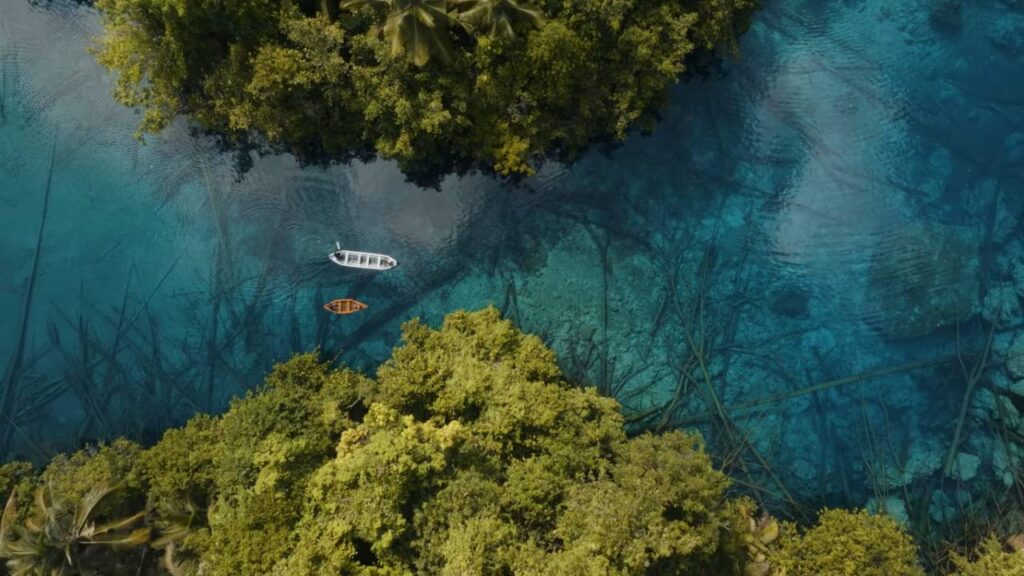
Dry Season: May to October
The dry season from May to October is the best time to visit, offering clear skies, minimal rainfall, and calm seas. This period is ideal for outdoor activities like diving, snorkeling, and island hopping, as underwater visibility is at its best. The calm waters also make for smoother boat rides, and the pleasant weather makes it perfect for exploring the islands on foot or by bike.
Wet Season: November to April
From November to April, the wet season brings more rain, but it also boosts marine activity. Nutrient-rich waters attract more marine life, making it a good time for divers, though conditions can sometimes be less ideal due to occasional storms. This season offers a quieter experience with fewer tourists, allowing you to enjoy the islands’ beauty in peace.
Banggai Festival: August
For a taste of local culture, plan your visit around the Banggai Festival in August. This vibrant celebration features traditional dances, music performances, boat races, and local crafts, giving visitors an opportunity to engage with the community and experience the islands’ cultural heritage.
Local Culture and Traditions of the Banggai Islands You Should Know
The Banggai Islands, home to the Orang Banggai, boast a rich and diverse cultural heritage shaped by a blend of Bugis, Malay, and indigenous traditions. These influences come together to create a vibrant local culture that is reflected in everything from music and dance to craftsmanship, food, and religion. Here’s a deeper dive into the unique traditions and customs that define life on the islands.
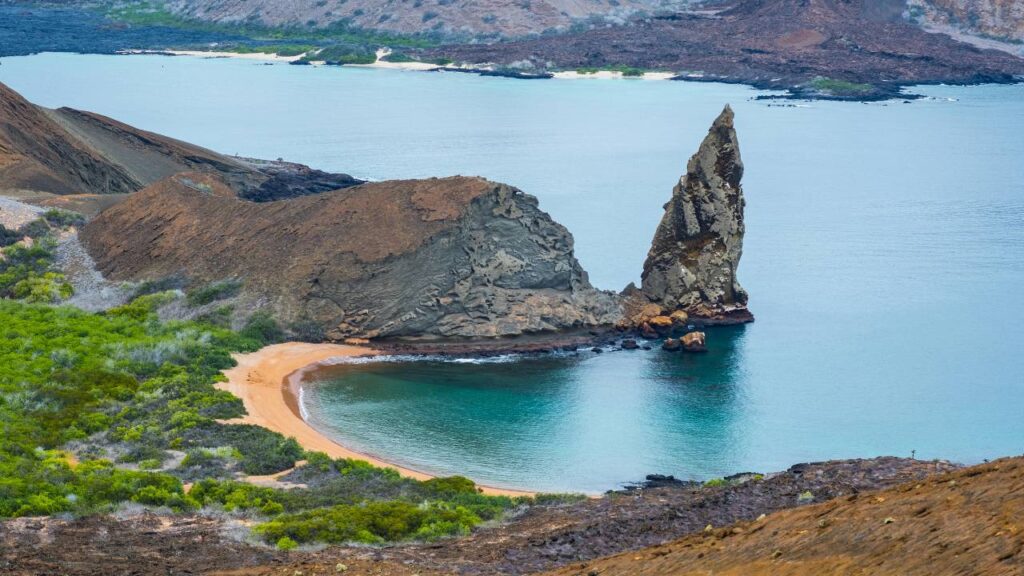
Traditional Music and Dance
Music plays an essential role in the cultural life of the Banggai Islands. Instruments like the gambus (a traditional string instrument) and the rebana (a type of drum) are central to many local performances and celebrations. These instruments help bring to life the stories and legends passed down through generations. Local dances, often performed during festivals and significant events, are intricate and symbolic, representing ancient myths and the islanders’ connection to their ancestors and the land.
Traditional dance is more than just entertainment; it’s a way of preserving history and ensuring that younger generations remain connected to their roots. Each movement and costume in these dances tells a story, whether it’s a celebration of the harvest, a tribute to the spirits of the land, or a re-enactment of ancient legends that continue to shape the cultural identity of the people.
Handicrafts and Local Artistry
The people of the Banggai Islands are also known for their skill in handicrafts, which combine both beauty and functionality. The creation of pamboang (traditional wooden boats) is an important craft that reflects the islanders’ deep maritime culture. These boats, hand-carved from wood, are not just tools for fishing but also represent the ingenuity and traditions that have been passed down over centuries.
Another admired craft is handwoven textiles. The Banggai people produce beautiful fabrics, often used in traditional clothing or as decorative items. The intricate designs and vibrant colors of these textiles speak to the creativity and artistic skills of the community. Coconut shell carvings and bamboo instruments further showcase the resourcefulness of the people, as they create functional art from natural materials found in abundance on the islands. These crafts are typically made in small, family-run workshops and can be found at local markets, offering visitors a chance to take home a piece of the island’s cultural heritage.
Cuisine: A Taste of the Sea
Food is a major part of the Banggai Islands’ communal life, with the diet being predominantly based on seafood. The surrounding waters provide a wide range of fish, shellfish, and seaweed, which form the cornerstone of local dishes. Ikan bakar (grilled fish) is a must-try, often marinated in a blend of local spices and cooked over an open flame. It’s a popular dish enjoyed by locals and visitors alike.
Another local delicacy is kasuami, a dish made from cassava, which is a staple in many Indonesian regions. Kasuami is often served with fish or other meats, providing a hearty, starchy accompaniment to the island’s seafood. Dabu-dabu, a spicy chili salsa, is a common side dish that adds a zesty kick to meals. The emphasis on sharing meals is a reflection of the communal spirit that is at the heart of Banggai culture. Food is often enjoyed in large gatherings, where families and friends come together to bond over a shared meal.
Religion and Beliefs
Religion is a central aspect of life in the Banggai Islands, with Islam being the predominant faith. The islanders practice Islam, and this is reflected in their daily routines, festivals, and communal activities. The local mosques are focal points of religious life, where the community gathers for prayers and other important religious events.
Despite the dominance of Islam, traditional beliefs and animism continue to play a role in the cultural practices of the Banggai people, particularly in more remote villages. Some customs, rituals, and festivals are influenced by animistic beliefs, reflecting the islanders’ deep respect for nature and the spirits that are believed to inhabit the environment. These beliefs shape everything from the way people interact with the land to the way they celebrate life’s important milestones, like births, marriages, and harvests.
Top Things to Do in the Banggai Islands for Nature and Ocean Lovers
The Banggai Islands are a haven for nature lovers and ocean enthusiasts, offering a wide array of activities that allow visitors to connect with both the land and sea. From vibrant marine life beneath the waves to lush rainforests and secluded waterfalls, the islands provide numerous opportunities for adventure and discovery.
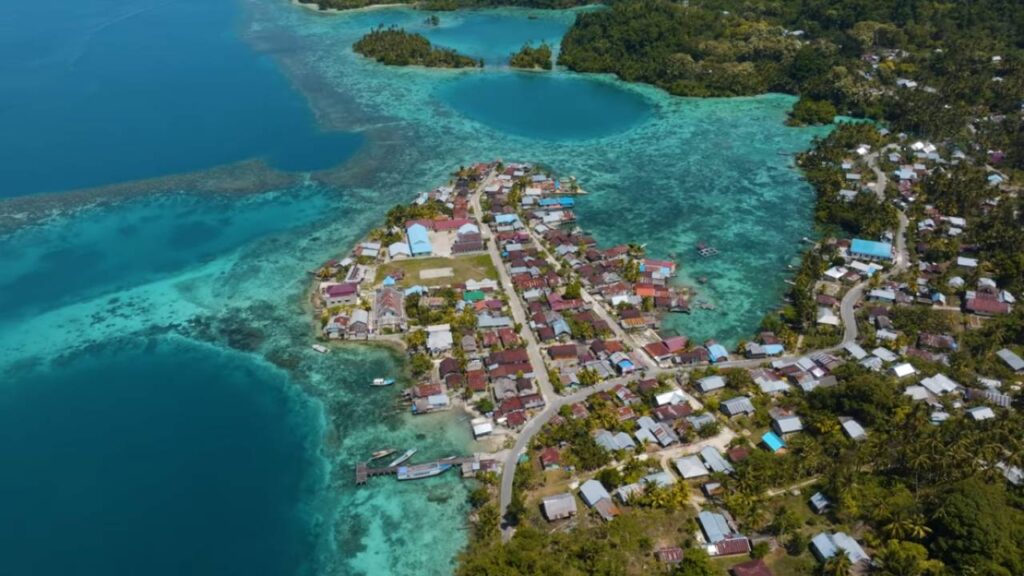
Here’s a detailed guide to the top things you can do in the Banggai Islands to fully immerse yourself in its natural beauty.
1. Snorkeling and Diving: Enhancing the Rich Marine Biodiversity
One of the primary reasons to visit the Banggai Islands is its spectacular underwater world, making it a must-visit destination for snorkelers and divers. The Banggai Reef System is home to some of the most diverse marine ecosystems in Southeast Asia. The clear waters and excellent visibility allow you to vibrant coral gardens teeming with life. Divers can swim among schools of colorful fish, sea turtles, and large schools of pelagic species, while also discovering intricate coral formations and underwater caves.
Who enjoy underwater photography, the Banggai Islands offer endless opportunities. The rich biodiversity and pristine reefs provide a perfect backdrop for capturing images of rare marine life, from tiny seahorses to majestic manta rays. The islands’ reefs are still relatively untouched by mass tourism, which means you can experience a natural, unspoiled underwater environment that is increasingly rare in other parts of the world.
2. Enjoying Mangroves and Coastal Ecosystems: Hidden Paradise for Wildlife
Nature lovers will be thrilled to the mangrove forests and coastal ecosystems that line the shores of the Banggai Islands. These areas are not just beautiful but also ecologically significant, offering habitats for a variety of marine and terrestrial species. The mangrove forests act as vital breeding grounds for numerous fish species, while also serving as a natural filter for the surrounding waters. They are a haven for birdwatchers and wildlife enthusiasts, offering the chance to spot a wide range of local and migratory birds.
One of the most notable residents of the Banggai Islands is the Banggai Cardinalfish (Pterapogon kauderni), a species that is endemic to these waters. The fish has become a symbol of the region’s conservation efforts due to its restricted habitat. Visitors can see these unique, striking fish in the wild, often while snorkeling or diving. The Banggai Cardinalfish is just one of many species found here, making the area a biodiversity hotspot for marine enthusiasts and conservationists alike.
3. Trekking and Exploring Rainforests: Trek Through Lush Wilderness
If you enjoy hiking and immersing yourself in nature, then the trekking opportunities on the Banggai Islands won’t disappoint. Peleng Island, one of the largest islands in the archipelago, offers some of the best hiking trails for those who want to visit its lush rainforests. The island’s interior is a treasure trove of biodiversity, where visitors can spot tropical birds, monkeys, and various species of reptiles. The dense jungle is home to unique flora, including towering trees and vibrant plant species that contribute to the island’s rich ecosystem.
The trekking trails on Peleng Island lead adventurers to secluded corners of the island, including hidden waterfalls that provide an excellent opportunity to cool off after a rewarding hike. These remote waterfalls offer peaceful surroundings and stunning photo opportunities, making them a perfect spot for those seeking both adventure and tranquility in nature. Along the way, you can enjoy panoramic views of the island’s coastline, adding to the allure of the trek.
4. Birdwatching and Wildlife Spotting: Natural Paradise
Birdwatching is another top activity for those visiting the Banggai Islands. The archipelago’s varied landscapes, from coastal mangroves to dense rainforests, create a perfect environment for both resident and migratory birds. The islands are home to a number of unique species, including colorful parrots and kingfishers, making them a paradise for bird enthusiasts. As you visit the islands, whether by boat or on foot, keep your eyes peeled for the many birds that call the Banggai Islands home.
In addition to birds, the islands’ forests and coastal areas also host a variety of other wildlife, including monkeys, lizards, and various species of bats. As you hike through the jungle or travel by boat, it’s possible to spot these creatures in their natural habitat, providing a unique glimpse into the island’s thriving ecosystems.
5. Island Hopping: Chance to visit Remote, Uninhabited Islands
Island hopping is another exciting way to the Banggai Islands. Several smaller, uninhabited islands surround the main islands, offering visitors a chance to visit secluded beaches, pristine coral reefs, and quiet coves. You can charter a boat to visit some of these remote islands, where you can enjoy the solitude and beauty of untouched nature.
These smaller islands are perfect for a day trip or a quiet retreat away from the crowds. You can snorkel in the crystal-clear waters, sunbathe on empty beaches, or simply enjoy the peacefulness of these hidden gems. Whether you are seeking solitude or adventure, the smaller islands of the Banggai archipelago offer a wealth of opportunities to immerse yourself in nature.
Best Time of Year to Go to Machu Picchu: Weather, Crowds & Travel Tips
FAQs
1. Where are the Banggai Islands located?
The Banggai Islands are located in the central part of Sulawesi, Indonesia. They are part of the Banggai Archipelago, situated in the Sulawesi Sea, east of the island of Sulawesi.
2. How do I get to the Banggai Islands?
To reach the Banggai Islands, you first need to fly to Luwuk in Central Sulawesi, which is the nearest airport. From Luwuk, you can travel to the islands by ferry, speedboat, or traditional wooden boat (perahu). Ferries usually take 4 to 6 hours, while speedboats are faster, taking 2 to 3 hours.
3. What is the best time to visit the Banggai Islands?
The best time to visit is during the dry season from May to October, when the weather is sunny, and the seas are calm. For those interested in marine life, the wet season from November to April also offers great diving opportunities, as the nutrient-rich waters bring more marine activity, though there may be rain and delays.
4. What are the top attractions in the Banggai Islands?
The Banggai Islands are famous for their stunning underwater biodiversity, especially for snorkeling and diving in the Banggai reef system. Visitors can also visit lush mangrove forests, trek to hidden waterfalls on Peleng Island, and experience unique wildlife, including the Banggai Cardinalfish.
5. What local culture and traditions should I experience in the Banggai Islands?
The Orang Banggai people have a rich cultural heritage, blending Bugis, Malay, and indigenous traditions. Traditional music (gambus, rebana), dances, and craftsmanship such as handwoven textiles and Banggai boats (pamboang) are integral to local life. Don’t miss the Banggai Festival held in August for traditional performances, boat races, and craft displays.
6. Is it safe to travel to the Banggai Islands?
Yes, the Banggai Islands are generally considered safe for travelers. Like any remote destination, it’s important to exercise caution with transport options, as the infrastructure may not be as developed as in major tourist areas. Ensure to check weather conditions when planning boat travel.
7. What kind of accommodation is available in the Banggai Islands?
Accommodation in the Banggai Islands ranges from basic guesthouses and homestays to more comfortable eco-resorts. The islands have limited luxury options, but many accommodations provide a peaceful and authentic island experience.
8. What activities can I do besides snorkeling and diving?
In addition to water activities, the Banggai Islands offer opportunities for trekking, birdwatching, and exploring remote islands. You can also visit local villages, participate in traditional ceremonies, and experience the islands’ natural beauty.
9. What food can I expect in the Banggai Islands?
The local cuisine is seafood-based, with dishes like ikan bakar (grilled fish), kasuami (cassava), and dabu-dabu (spicy chili salsa). Meals are typically shared in the communal spirit, allowing visitors to experience the island’s strong sense of community.
10. Can I visit the Banggai Islands for a day trip?
While it’s possible to visit certain nearby islands for a day trip, the Banggai Islands are best explored with an overnight stay. The distance and travel time between the main islands can be long, so it’s recommended to stay at least a few days to fully appreciate the area’s natural beauty and culture.
